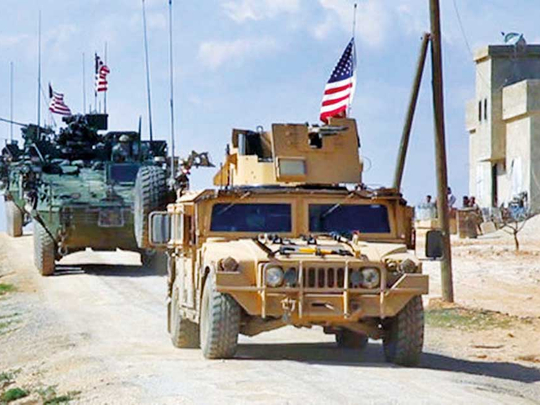
Munich, Germany: As the fight against the Daesh moves beyond its de facto capital in Raqqa, the Pentagon is readying itself for an increasingly complex battlefield in northern Syria, where US-backed forces, pro-Syrian government troops and Russian jets will likely all be fighting near one another.
Speaking to reporters on his way to Germany Monday to meet with European allies, Secretary of Defence Jim Mattis spoke broadly about the US military’s future operations against the Daesh in the Euphrates River Valley, adding that it will take “more precision” to stave off any incidents between the disparate forces operating there.
“You have to play this thing very carefully,” Mattis said. “The closer we get, the more complex it gets.”
Mattis also acknowledged that the US would continue to supply Kurdish forces in the north with weapons despite objections by US ally Turkey. “When they don’t need them anymore we’ll replace them with what they do need,” he said.
The strip of the Euphrates River Valley that runs through northeastern Syria has turned into one of the last Daesh redoubts following the group’s near-defeat in the Iraqi city of Mosul and the US-led operation to encircle its stronghold in Raqqa. While the Pentagon has eyed the region as the next place to attack the militants, Syrian government forces and Iranian-backed militias have also made a concerted effort to move into the area.
To avoid the seemingly inevitable collision between US-backed fighters and pro-Syrian government forces, including their respective air support, Mattis indicated that the Euphrates River Valley, would be carved up into “deconfliction” areas. The zones would be marked by easily identifiable parts of the river valley, such as towns and geographic features on the map, he said.
“As long as it’s worked out by the commanders and enough people know about it in sufficient time there are ways that have proven that we can do this,” Mattis said. The retired four-star Marine general suggested that with so many forces operating in the same area that deconfliction efforts would have to be worked out differently than they have in the past, though how exactly is unclear.
Currently, there are a number of communication lines between Russian and US forces, including one that runs into the US-led coalition’s main operations centre in Qatar and another that connects the commander of US forces in Iraq and Syria, Lt. Gen. Stephen Townsend, to his Russian counterpart in Syria.
“The deconfliction lines, through all of these contentious months that we’ve been through, have never gone down,” Mattis added.
The communication channels between the United States and Russia, Mattis said, have helped US forces stay “focused” on fighting the Daesh and have kept the United States from a widening role in the six-year-old conflict that has claimed hundreds of thousands of lives and displaced millions.
“We just refuse to get drawn into the Syrian Civil War,” Mattis said. “We try to end that through diplomatic means.”
A spate of incidents in recent weeks — including the downing of a Syrian government jet and two Iranian-made drones by US aircraft — appear to suggest the opposite of Mattis’ claims. The series of air attacks, taken in self-defence by US forces, according to the Pentagon, occurred as pro-Al Assad forces threatened or approached US-backed Syrian fighters.
Following the shooting down of the Syrian jet, Russia said it would treat US aircraft west of the Euphrates as “targets,” but since the threats US aircraft have continued to operate on both sides of the river without apparent incident.
One contingent of US-backed Syrian fighters is located in the south near the Iraqi border, while the other group — called the Syrian Democratic Forces, or SDF — are fighting in north in the city of Raqqa.
The Syrian Democratic Forces, backed by US-led air power and supplied with American weapons, has been a point of friction between the United States and Turkey, as the latter sees the group’s Kurdish arm, known as the YPG, as a direct extension of the Turkey-based Kurdistan Worker’s Party, or PKK.
The PKK is considered a terrorist organisation by both the United States and Turkey and has waged an insurgency within Turkish borders off and on for years. The Turkish government is concerned that the US arms and equipment given to the YPG will end up in the hands of the PKK.
To waylay this fear, Mattis, according to a report in Reuters last week, indicated in a letter to his Turkish counterpart that the Pentagon would take back the weapons from the Kurdish fighters after the Raqqa campaign.
On Monday, while Mattis didn’t directly confirm the letter’s existence, he did say the Pentagon would “recover that sort of gear” after it’s no longer needed. When asked by a reporter if he envisioned the entirety of the group’s US-supplied weapons would be taken from them following the end of the campaign against the Daesh, Mattis said, “we’ll do what we can.”
Mattis’ remarks leaves open the possibility that the SDF will likely continue to fight the Daesh in northern Syria after the operation to retake Raqqa ends.
— The Washington Post.












